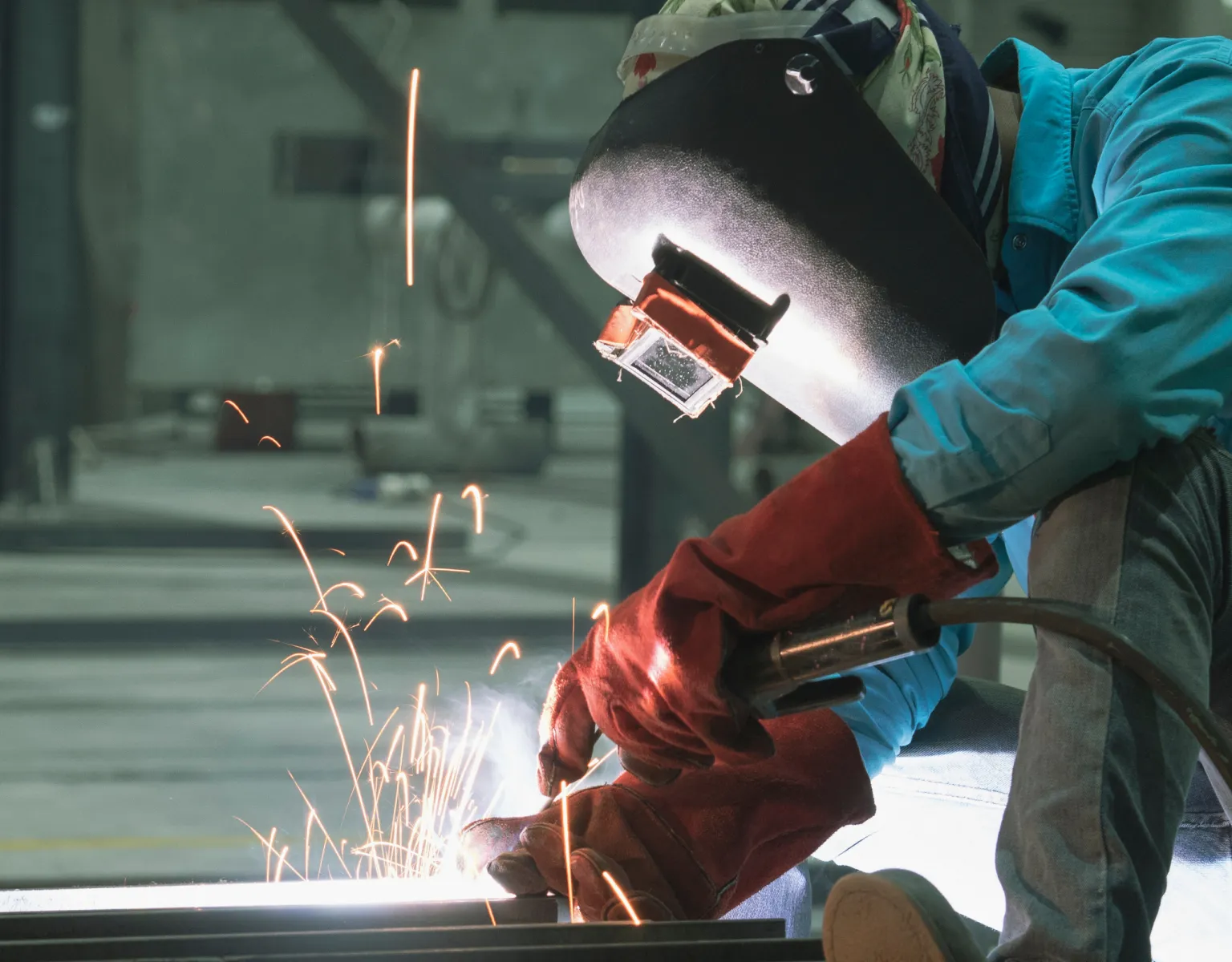Advanced Welding Inspection Service for Design Applications
Advanced Welding Inspection Service for Design Applications
Blog Article
Understanding the Numerous Kinds Of Welding Techniques and Services Offered

Summary of Welding Methods
Welding methods encompass a diverse variety of approaches made use of to sign up with products together completely. One usual approach is arc welding, which includes producing an electrical arc in between an electrode and the base product to thaw and fuse them with each other. This strategy is versatile and can be used with various steels, making it among one of the most extensively utilized welding procedures.

Additionally, TIG welding, or Gas Tungsten Arc Welding (GTAW), is a clean and precise welding method that uses a non-consumable tungsten electrode to develop the weld. TIG welding is commonly utilized for thinner materials and supplies exceptional control over the welding procedure. Overall, understanding these different welding strategies is important for picking the most appropriate technique for various projects.
Frequently Utilized Welding Approaches
A variety of commonly made use of methods are employed in the area of welding to efficiently join materials together. Among one of the most extensively utilized methods is Gas Steel Arc Welding (GMAW), likewise referred to as MIG welding. This method makes use of a wire electrode that is fed with a welding gun, along with a securing gas to safeguard the weld from contaminants airborne. An additional typical method is Shielded Metal Arc Welding (SMAW), or stick welding, which utilizes a flux-coated electrode to develop the weld. Tungsten Inert Gas (TIG) welding is preferred for its precision and adaptability, using a non-consumable tungsten electrode to produce the weld. Flux-Cored Arc Welding (FCAW) is typically made use of in commercial setups due to its high welding rate and portability. Furthermore, Immersed Arc Welding (SAW) is optimal for developing deep welds on thick materials. These typically used welding methods deal with various demands and products, supplying alternatives for various welding applications.
Advanced Welding Solutions
Structure upon the structure of typically used welding approaches, the world of advanced welding solutions encompasses innovative techniques and technologies that push the borders of accuracy and performance in product signing up with procedures. Advanced welding solutions typically entail specialized approaches such as laser welding, electron beam of light welding, and friction mix welding. important link Laser welding makes use of a very concentrated beam to specifically join metals with marginal heat-affected zones, making it perfect for complicated or fragile components. Electron light beam welding, on the other hand, uses a high-velocity electron light beam to create deep weld infiltrations in materials like aerospace alloys or different steels. Friction mix welding, a solid-state joining process, allows the welding of materials that are testing to fuse utilizing traditional methods, like aluminum and copper. These sophisticated methods supply boosted control over the welding process, resulting in more powerful, extra durable welds with lowered distortion and boosted overall quality.
Specialized Welding Methods

One more specialized welding technique is laser beam welding, where a very concentrated light beam of light is used to join steels with minimal heat-affected zones and distortion. This approach is commonly employed in markets needing high accuracy and tidiness, such as electronics and medical tool production. Furthermore, explosive welding is a distinct method that makes use of regulated nitroglycerins to bond dissimilar metals together, developing solid and reliable joints. These specialized welding techniques showcase the variety and innovation existing in the area of welding, using remedies for a large variety of commercial applications.

Choosing the Right Welding Refine
Picking the proper welding procedure is critical in attaining ideal lead to metal construction and joining procedures. With numerous welding techniques readily available, it is vital to take into consideration variables such as the type of metal, density, joint design, and wanted outcome when selecting the appropriate welding procedure - see post Welding Inspection Service. Amongst the common welding methods are Gas Metal Arc Welding (GMAW), Shielded Steel Arc Welding (SMAW), Gas Tungsten Arc Welding (GTAW), and Flux-Cored Arc Welding (FCAW) GMAW, also referred to as MIG welding, is suitable for welding thin to thick metals and is flexible in various placements. On the other hand, SMAW, or stick welding, is a trustworthy technique for outside and field welding because of its mobility and simpleness. GTAW, or TIG welding, is perfect for welding slim products and provides accurate and high-grade welds. FCAW is preferred for welding thick materials and is understood for its high welding speeds. Comprehending the features this link of each welding process is essential in choosing the most appropriate technique for a certain welding project.
Final Thought
To conclude, comprehending the various types of welding strategies and solutions readily available is necessary for selecting the right approach for a particular task. By recognizing the frequently used welding methods, progressed welding solutions, and specialized strategies, people can make informed decisions to make sure the success of their welding tasks. It is very important to take into consideration factors such as materials, job demands, and spending plan when picking one of the most ideal welding procedure.
From standard approaches like stick welding to innovative processes such as laser welding, the globe of welding supplies a plethora of alternatives for signing up with metals with each other.Furthermore, TIG welding, or Gas Tungsten Arc Welding (GTAW), is a exact and clean welding method that uses a non-consumable tungsten electrode to produce the weld. Advanced welding solutions commonly entail specialized approaches such as laser welding, electron beam of light welding, and rubbing stir welding. Amongst the usual welding methods are Gas Metal Arc Welding (GMAW), Shielded Steel Arc Welding (SMAW), Gas Tungsten Arc Welding (GTAW), and Flux-Cored Arc Welding (FCAW) By being mindful of the commonly used welding methods, progressed welding services, and specialized techniques, people can make enlightened choices to ensure the success of their welding projects.
Report this page